Home >
Sea Kayaking >
Kit
Flat Earth Kayak sail rigging 2020
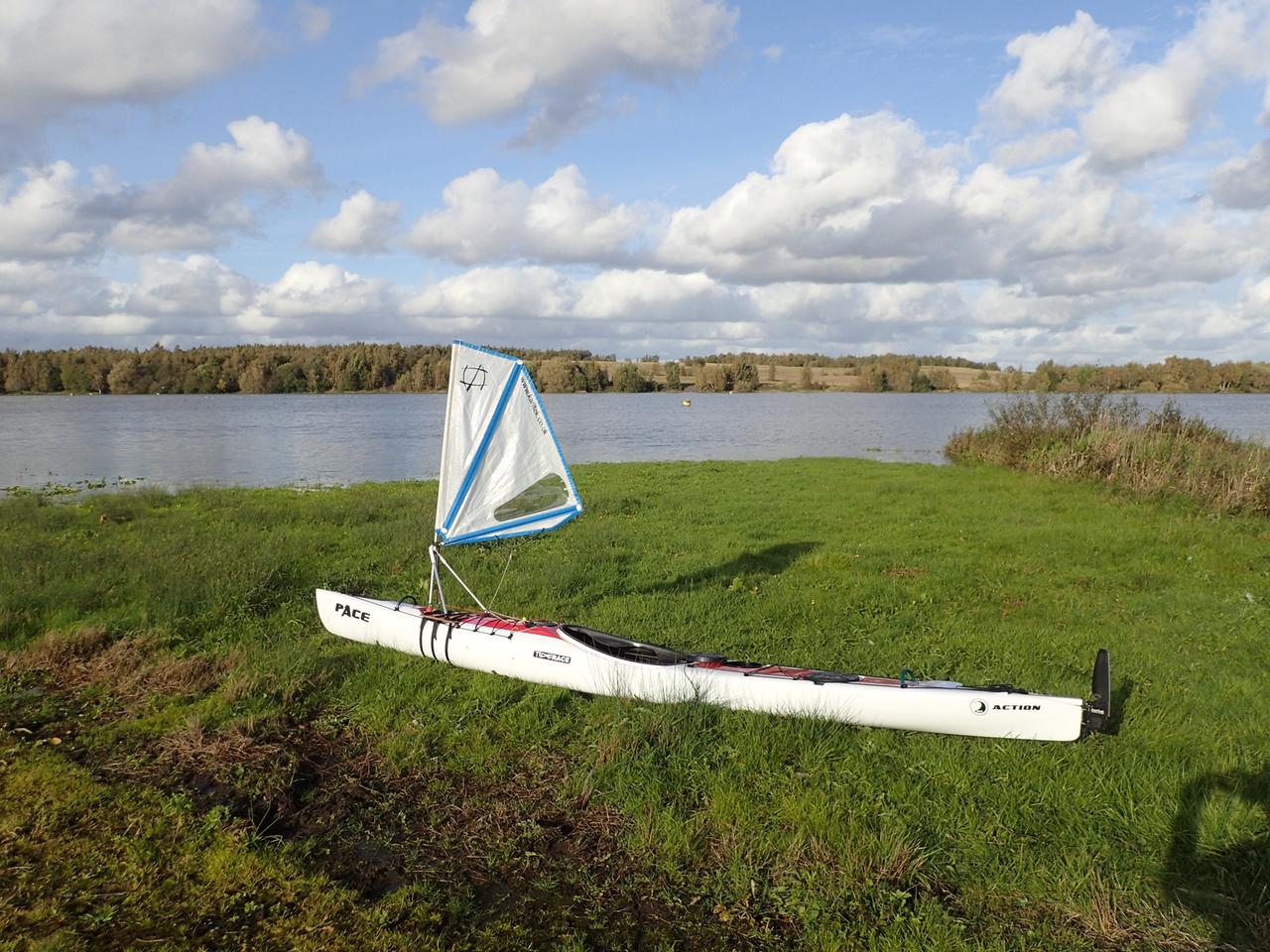
Background
I've rigged the Flat Earth Kayak sail (FEK) on several kayaks and in the 'traditional' way as shown by well known kayakers. However, IMHO there is a fundamental issue with that style of rigging on a sea kayak. At first glance it looks similar to the standard rigged on a regular sailing yacht, but that's where the similarity ends. On a yacht there is typically a substantial piece of mast like tubing just below the deck that extends to the bottom of the boat, to support the huge compression downforce on the mast. The side stays apply that downforce to keep the mast vertical to the boat as the sail applies heeling forces. The side stays are typically at a fairly wide point of the yacht.
On a sea kayak the sail is rigged fairly near the front where it's narrow and there is no tube beneath the mast to transfer downforce into the structure of the kayak. The rigidity of the deck alone has to take the strain. In practice when there's a considerable heeling moment, the deck will deform and the mast will lean with the lee stay becoming slack. The narrowness of the stay mountings each side of the mast exacerbate the problem. Extra structures have been made to reinforce the deck of some kayaks (e.g. Taran). The mounting area on each kayak differs substantially.
Rigid rigging
I'm experimenting with 'rigid rigging', and no holes drilled through the kayak for the time being. This involves an 'A' frame made from alloy tube instead of rope side stays. The same setup can be seen on some sand yachts (
example here). In this design the forces involved are totally different. There is virtually no downforce on the mast. Instead the forces are tension and compression on the respective sides of the 'A' frame, which are transferred into the base plate on the kayak. There is also a twisting force on the base plate which is built to take advantage of the compass recess to prevent it twisting. The base plate is secured over the front hatch cover by straps which go right around the hull.
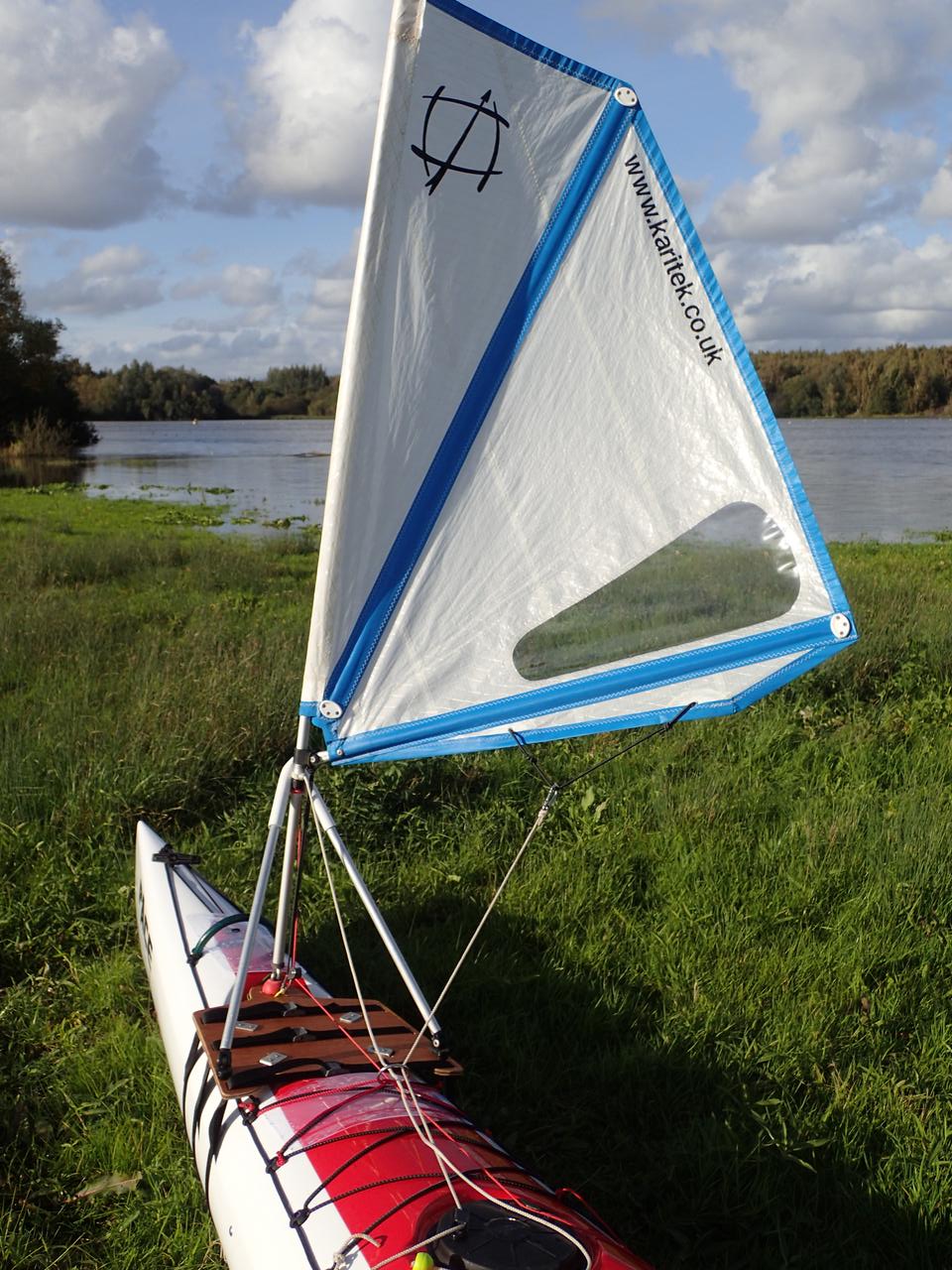
The 'A' frame and base plate strapped over the front hatch. It's custom made to suit the dimensions of the specific kayak.
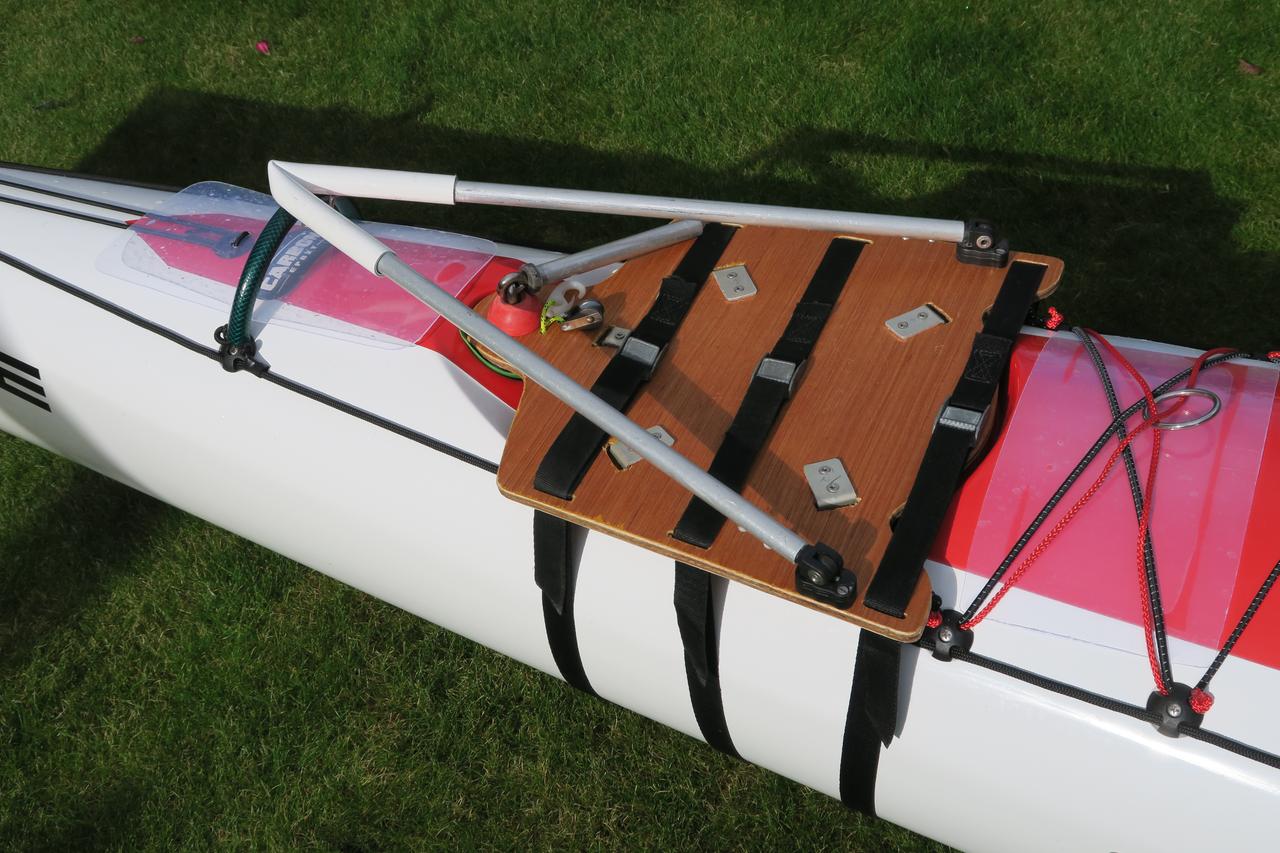
When the sail is rigged and hauled up into position, the mast fits snugly into the apex of the A frame
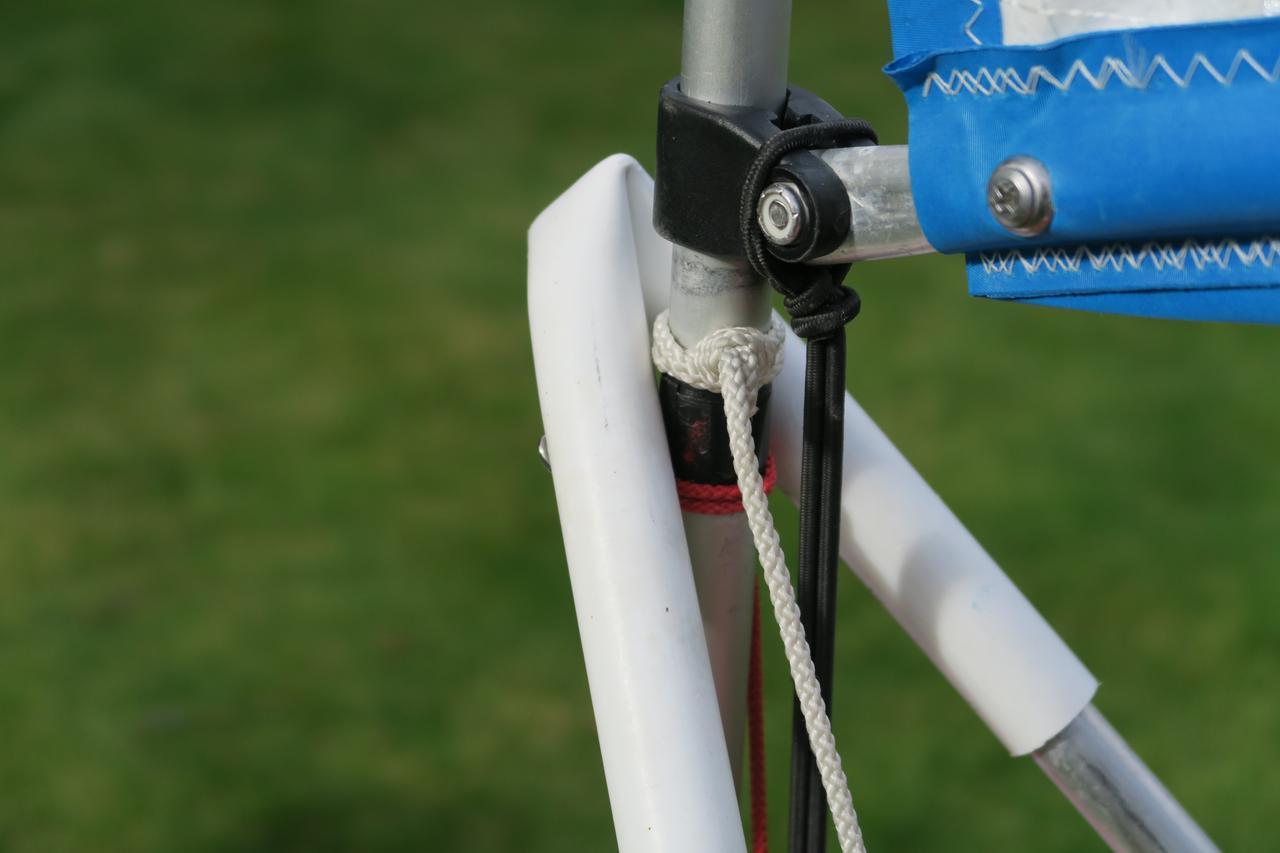
At the base of the mast is a universal joint. The pulley routes the uphaul rope back to the cockpit. The downhaul (black bungee) is connected to a plastic clip to prevent the sail from riding up the mast when lowered.

The main sheet from the sail passes through a stainless steel ring on a travelling attachment. This shares the load across four deck fittings. There's no need for a pulley here.
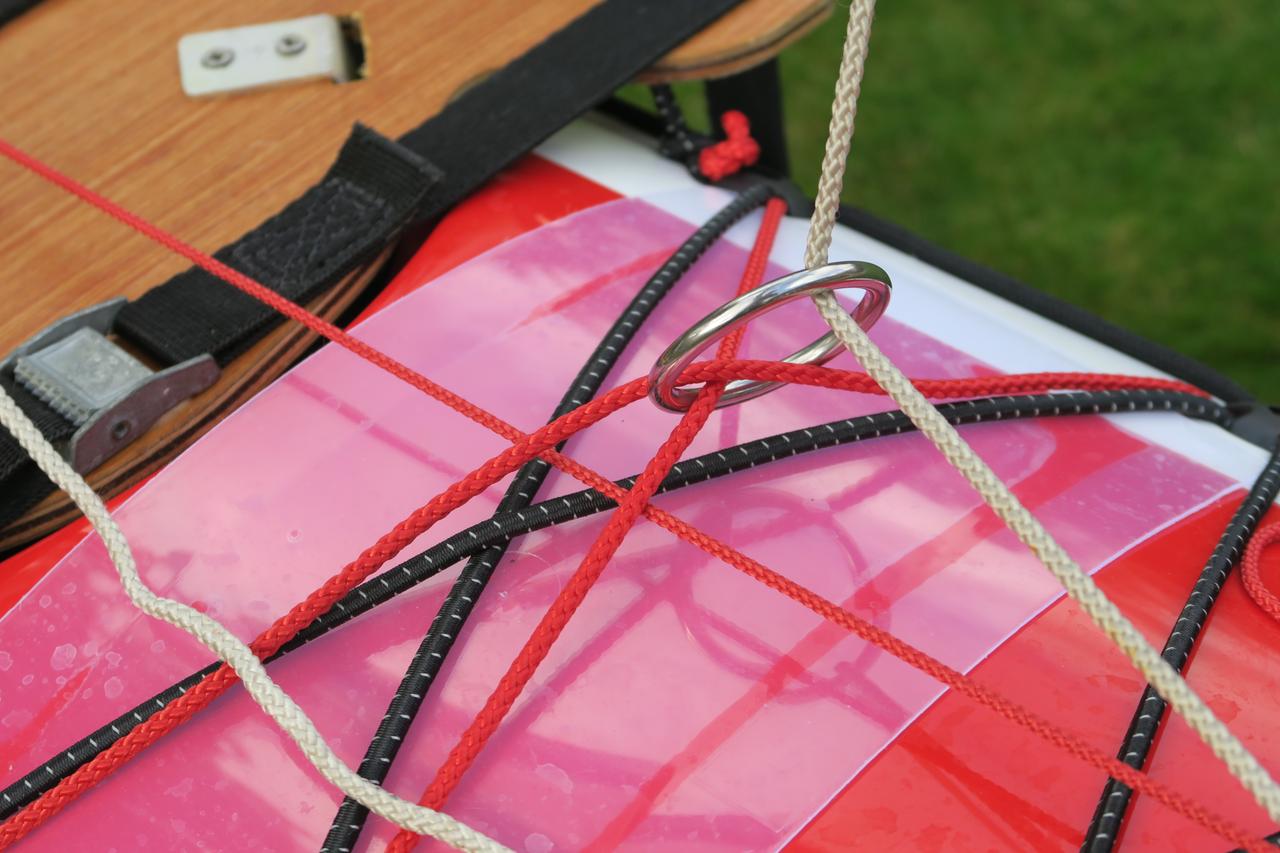
Bolted through the pod hatch cover are two clamcleats, one for the uphaul and one for the main sheet.

When the sail is lowered it's folded in on itself and wrapped around with a bungee line that goes from the deck line on one side to the other. If the sail is to be down for a while an additional velcro strap can be wrapped around the upper part of the sail to keep it tidy.
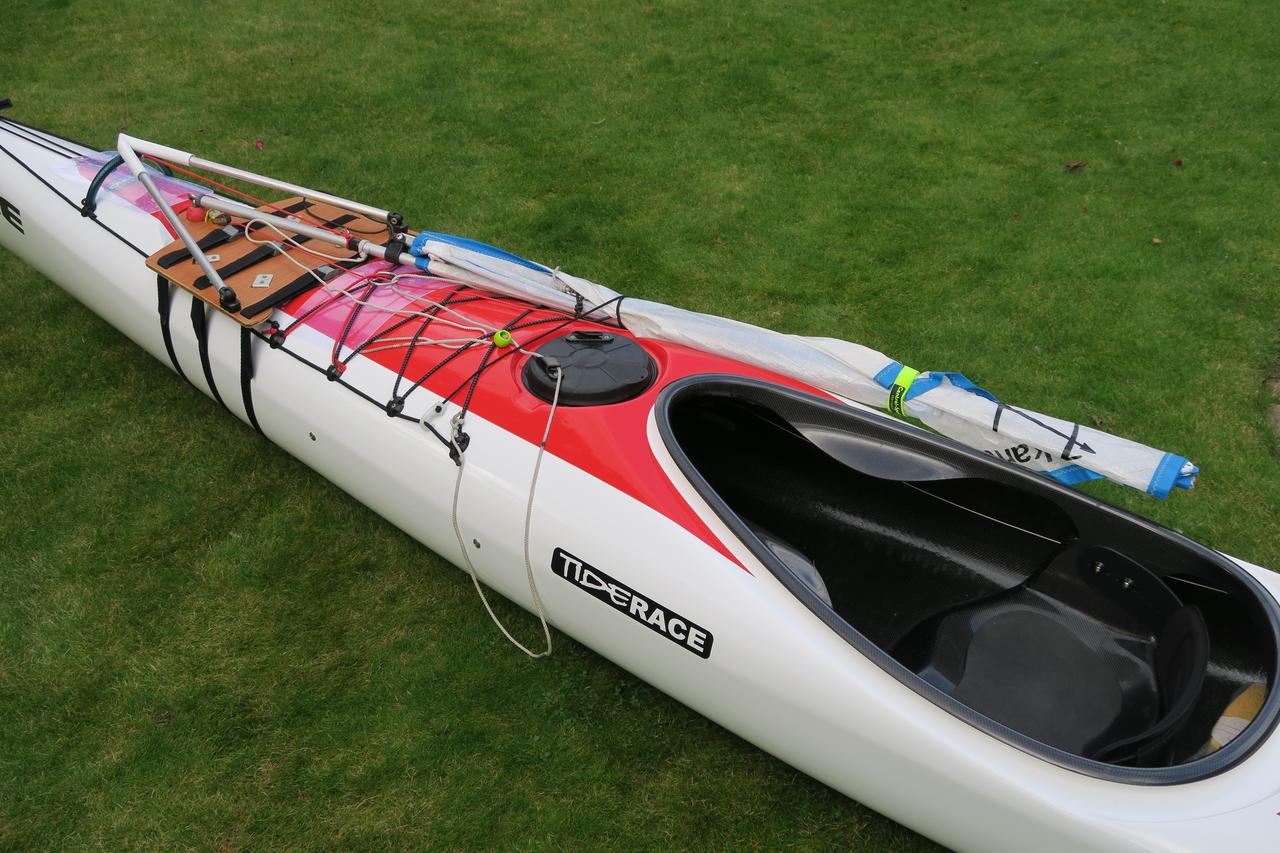
It's vital that the sail can be brought down at any time during sailing. The first thing is to ensure there is enough main sheet for the sail to go right around the front of the mast. The second point is to have a line that can pull the sail back and down, this can be seen as the loose white line a few pictures back (the mast snug in the A frame). The uphaul and main sheet ends should be tied to the deck bungees to ensure the ends don't get swept out of reach.
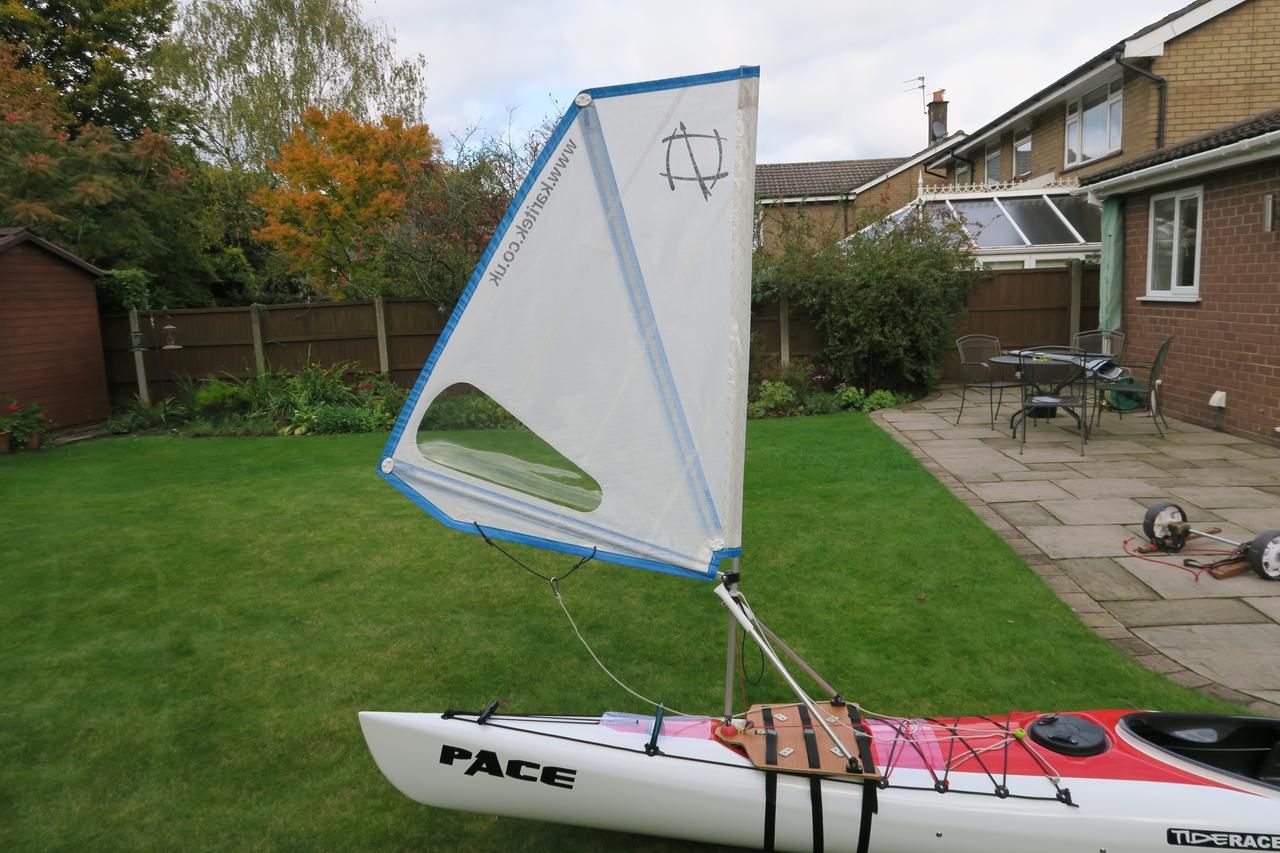
Performance
First time out on a local lake, in a wind of around force 4, everything worked really well. Having a rudder improves the experience enormously.
Home >
Sea Kayaking >
Kit
© Jules Kayak 2024, last updated: April 2024








